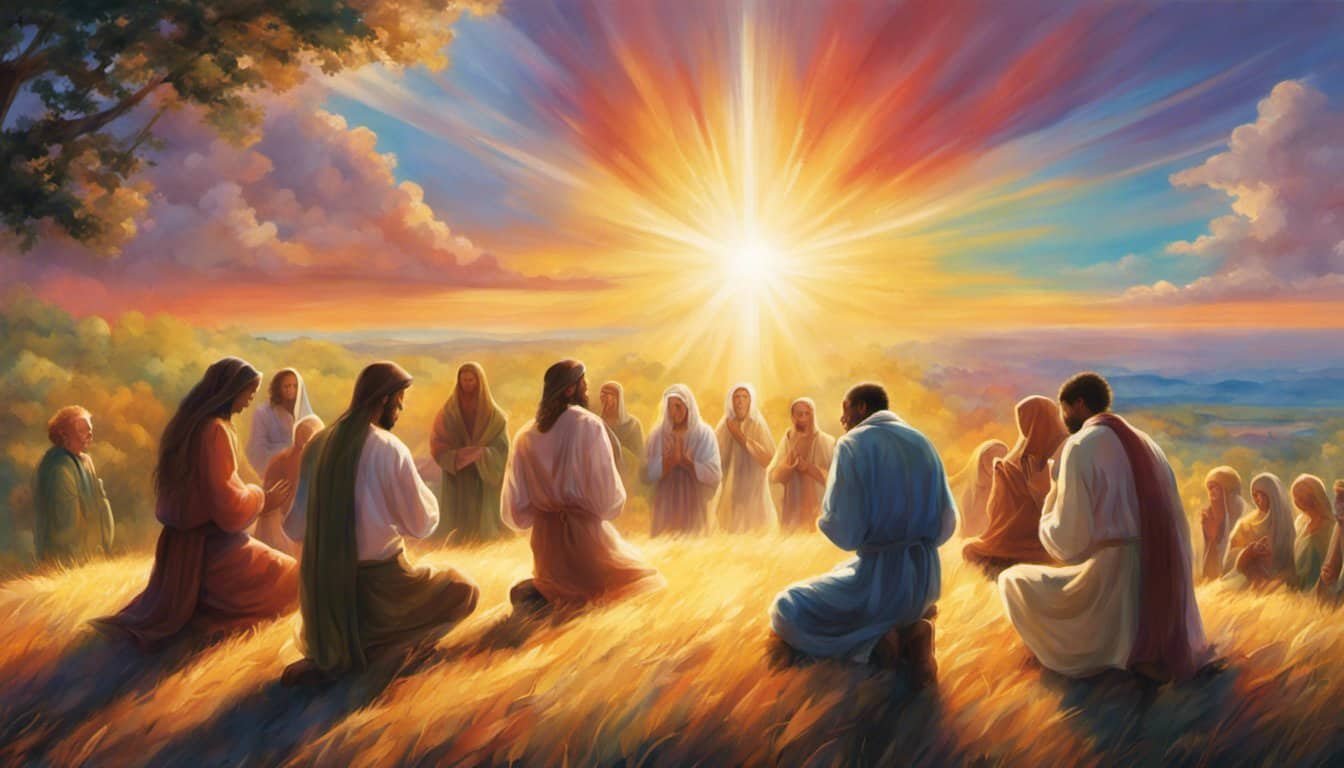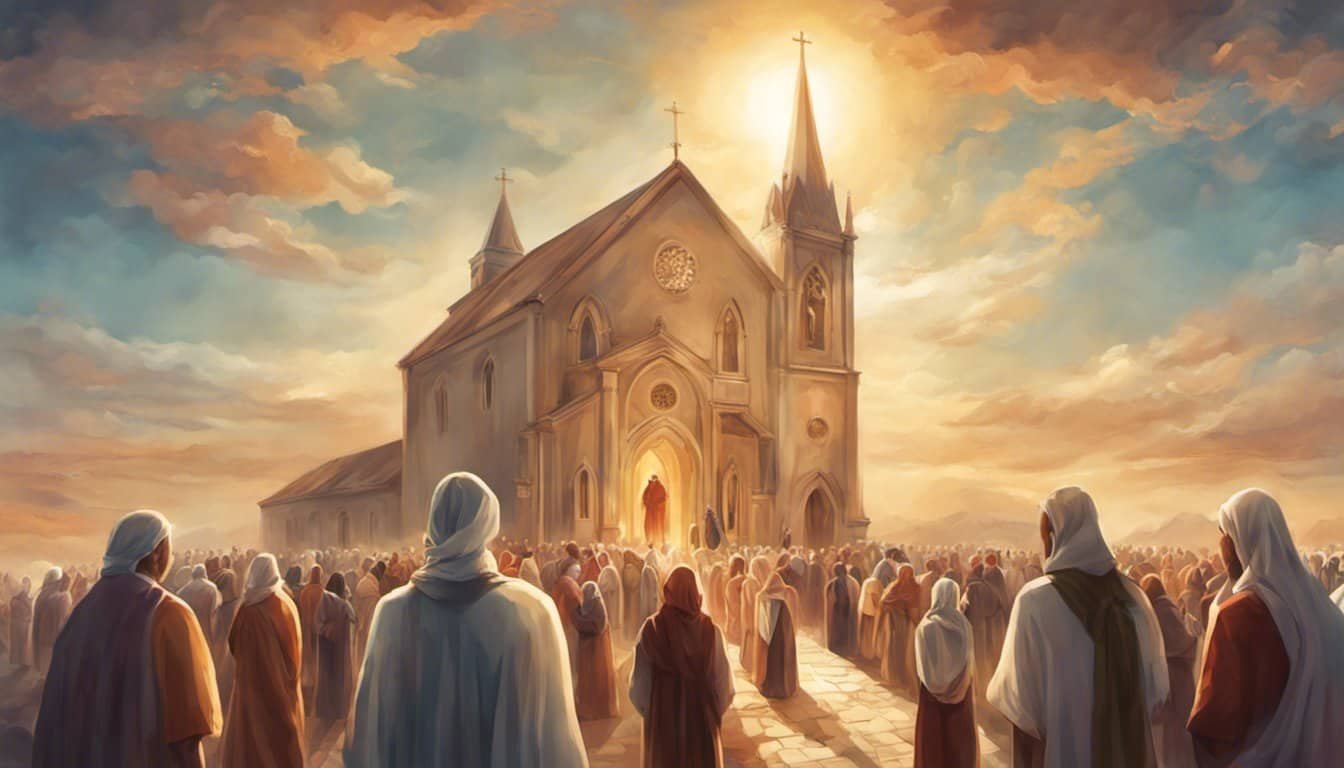Marriage is one of those timeless topics that fascinates me, especially when you dive into its portrayal in the Bible. The Old Testament and New Testament offer distinct perspectives on marriage, reflecting the cultural and spiritual shifts of their times. It’s intriguing to see how marriage evolves from a contractual agreement to a profound spiritual union.
In the Old Testament, marriage often centers around family alliances and social contracts. Fast forward to the New Testament, and you’ll find a shift towards love, mutual respect, and spiritual partnership. Understanding these differences not only enriches our knowledge of biblical history but also offers valuable insights into how our own views on marriage have been shaped.
Historical Context of Marriage in the Old Testament

Marriage in the Old Testament was way different from what many of us imagine today. It wasn’t just about love; it was about family alliances, economics, and social structures. Let’s break it down into a couple of key areas.
Economic and Social Dynamics
In Old Testament times, marriage had strong economic and social implications. Families often arranged marriages to secure alliances and ensure economic stability. For instance, Abraham’s servant negotiated the marriage between Isaac and Rebekah (Genesis 24:1-67) to secure a familial and economic bond. Betrothal agreements frequently included a bride price or dowry, illustrating the transactional nature of these unions. This process wasn’t so much about the individuals but more about their families and tribes.

Weddings were major social affairs. Communities celebrated with days-long feasts that both honored and showcased the families involved. These gatherings solidified social bonds and affirmed the couple’s socially recognized union. Remember Rachel and Jacob’s wedding feast in Genesis 29:22-23? This event, filled with celebration, reflected the community’s role in marriage.
Religious and Cultural Perspectives
Religious beliefs and cultural norms shaped marriage practices deeply. The Law of Moses outlined specific regulations and responsibilities for married couples. Deuteronomy 24:5, for example, instructed that a newly married man should not be sent to war or have other duties laid upon him for one year, allowing time to bond with his wife.
Polygamy was also common and often practiced by leaders. King Solomon’s many wives (1 Kings 11:3) serve as a prime example. However, these practices were not without complications, often leading to family strife.
Prophets frequently used marriage metaphors to illustrate Israel’s relationship with God. For instance, in Hosea 1-3, the prophet Hosea’s marriage to Gomer reflected God’s steadfast love despite Israel’s unfaithfulness. These religious narratives instilled a deeper, more covenantal concept of marriage.
As you can see, understanding these nuances provides a richer picture of marriage in the Old Testament, beyond just the words of the texts.
Marriage Rites and Rituals in the Old Testament
In the Old Testament, marriage rites and rituals were steeped in tradition and had significant cultural and religious importance. From marriage contracts to the ceremonial practices, these elements shaped the foundational understanding of marriage.
Marriage Contracts and Dowries
Marriage contracts were a big deal back then. These weren’t just agreements between the bride and groom; they involved both families. A marriage contract, often written, outlined the duties of the husband and wife. It included economic provisions and, in some cases, consequences of failing to uphold the agreement. This wasn’t just about love; it was about building strong family ties and ensuring the community’s stability.
Families exchanged dowries. This practice involved the bride’s family providing gifts, money, or property to the groom’s family. In Genesis 24, for example, Abraham’s servant gave valuable gifts to Rebekah’s family when securing her as Isaac’s wife. The dowry served multiple purposes, including compensating the future husband’s family for taking on a new member and ensuring the bride’s future security.
Ceremonial Practices
Ceremonial practices were equally important. Marriage ceremonies involved communal events filled with joy and celebration. Genesis 29 describes Jacob’s marriage to Leah, which lasted for seven days—a whole week of festivities! These ceremonies included feasting, music, and dancing. They reinforced social bonds and showed the community’s approval of the union.
Specific rituals varied but usually included a betrothal period (an official engagement) where the couple was considered legally bound even before living together. The betrothal period could last a year or more. If the engagement broke off, it required a formal divorce.

Witnesses played a crucial role. They were necessary to validate the marriage agreement and ensure all parties’ fair treatment. Witnessing marriage rites was a communal responsibility, underscoring the significance of marriage within the community.
In subsequent years, prophets like Hosea used marriage imagery to represent God’s relationship with His people. The emphasis transitioned from contract and ceremony to deeper spiritual themes. So, while Old Testament marriage rites and rituals were rooted in legal and ceremonial practices, they also laid the groundwork for understanding marriage as a covenantal relationship, a concept that evolves in the New Testament.
Comparative Analysis of Marriage in the New Testament
Marriage in the Old Testament focused heavily on social, economic, and religious dimensions. But its depiction in the New Testament presents some notable changes.
Shifts in Social and Religious Attitudes
In the New Testament, attitudes towards marriage shifted significantly compared to the Old Testament. While the Old focused on marriage as an economic alliance, the New Testament portrays it more as a spiritual union. This shift becomes clear when examining early Christian communities. Paul, for example, emphasized mutual love and respect between spouses (Ephesians 5:25-33). The concept of love as a foundation for marriage was relatively novel and aligned with Jesus’ broader teachings on love and compassion.
Additionally, the New Testament minimizes the importance of social status in marriage. Contrast this with arranged marriages for economic stability seen in the Old Testament. Christian texts praise partnerships formed out of genuine affection and mutual belief in Christ. The social hierarchy begins to lose its grip on familial alliances, and religious devotion becomes a crucial element.
Jesus’ Teachings on Marriage
Jesus’ teachings brought profound new insights into marriage. In the Gospels, Jesus spoke about the sanctity of marriage, often highlighting its indissolubility (Matthew 19:3-9). He redefined marriage not merely as a legal contract but as a divine union. Jesus underscores that what God has joined together, no one should separate.
Importantly, Jesus also emphasized fidelity and equality. The story of the woman caught in adultery (John 8:1-11) not only shows His mercy but his disapproval of double standards. He insisted on the value of each individual within a marriage, turning traditional gender roles on their head.
These teachings reinforced the notion of marriage as a collaborative partnership grounded in faith and dedication to God. By presenting marriage as a lifelong covenant and a sacred bond, Jesus elevated its spiritual significance far beyond the transactional interplay characteristic of Old Testament unions.
Shifts in social attitudes and Jesus’ profound teachings redefined marriage in the New Testament, transitioning from an economic arrangement to a spiritual covenant grounded in mutual love and faith.
Marriage Rites and Rituals in the New Testament
Hey folks, Adam here! As a youth pastor for over 20 years, I’ve seen firsthand how much young people (and adults) have questions about marriage, especially when looking at the differences between the Old and New Testament teachings. Let’s dive into the marriage rites and rituals from the New Testament and see what wisdom we can uncover. Trust me, it’s going to be enlightening!
The Role of the Church and Community

The New Testament places a lot of emphasis on the church’s role in marriage. Back in the day, the community played a vital part too. Think about it; in Paul’s letters, he often mentioned the church as the “Body of Christ,” meaning we are all interconnected. Wedding celebrations were (and still are) community events. The church wasn’t just a bystander; it was an active participant, celebrating and supporting the newlyweds.
Also, the early Christians gathered for worship and fellowship, and marriage was integrated into this communal life. It wasn’t just about two people but about their integration into the body of believers. During weddings, prayers, scripture readings, and blessings from church elders were central, connecting the new union to the broader faith community.
Symbolism and Sacrament in Christian Marriage
Marriage in the New Testament isn’t just a social contract; it’s a sacrament—an outward sign of inward grace. Jesus’ miracle at Cana (John 2:1-11) underscored the sacredness of marriage. Water turned into wine symbolizes the transformation in marriage—the ordinary becoming extraordinary through Christ’s presence.
Paul made a big deal about marriage reflecting Christ’s relationship with the Church. In Ephesians 5:25-33, he called husbands to love their wives as Christ loves the Church, sacrificially and fully. This wasn’t just poetic talk; it set the bar high for marital relationships, making love, mutual respect, and sacrifice key components.
Christian weddings often included specific rituals and symbols, like exchanging rings—a sign of eternal love, much like the unending love of Christ. Vows spoken in these ceremonies were promises not just to each other but before God and the community, making them sacred oaths.
Conclusion

Reflecting on the journey from the Old Testament to the New Testament, it’s clear that the concept of marriage has undergone a profound transformation. What started as a strategic alliance has evolved into a deeply spiritual and sacramental union. The New Testament’s emphasis on mutual love, respect, and lifelong commitment offers a beautiful blueprint for modern marriages.
I’ve found it fascinating to see how the church and community play a pivotal role in nurturing and celebrating these unions. By embracing these timeless principles, we can truly honor the sacredness of marriage and reflect Christ’s love in our own relationships.
Frequently Asked Questions
How was marriage viewed in the Old Testament?
Marriage in the Old Testament was mainly seen as a strategic alliance between families. Additionally, it had significant social and economic implications.
How did the New Testament redefine marriage?
The New Testament redefined marriage as a spiritual union based on mutual love and respect. Jesus emphasized it as a lifelong covenant between partners.
What role does the church play in New Testament marriages?
In the New Testament, the church plays a crucial role in supporting and celebrating marriages. It emphasizes the spiritual aspects and community support in the marriage rites.
What is the significance of rituals and symbols in Christian marriage?

Rituals and symbols in Christian marriage highlight eternal love and sacred oaths. They reflect Christ’s love for the Church and emphasize the sacred nature of the marital covenant.
How is Christian marriage seen as a sacrament?
Christian marriage is viewed as a sacrament reflecting Christ’s love for the Church. It involves specific rituals and symbols that underline the spiritual and covenantal aspects of the union.












